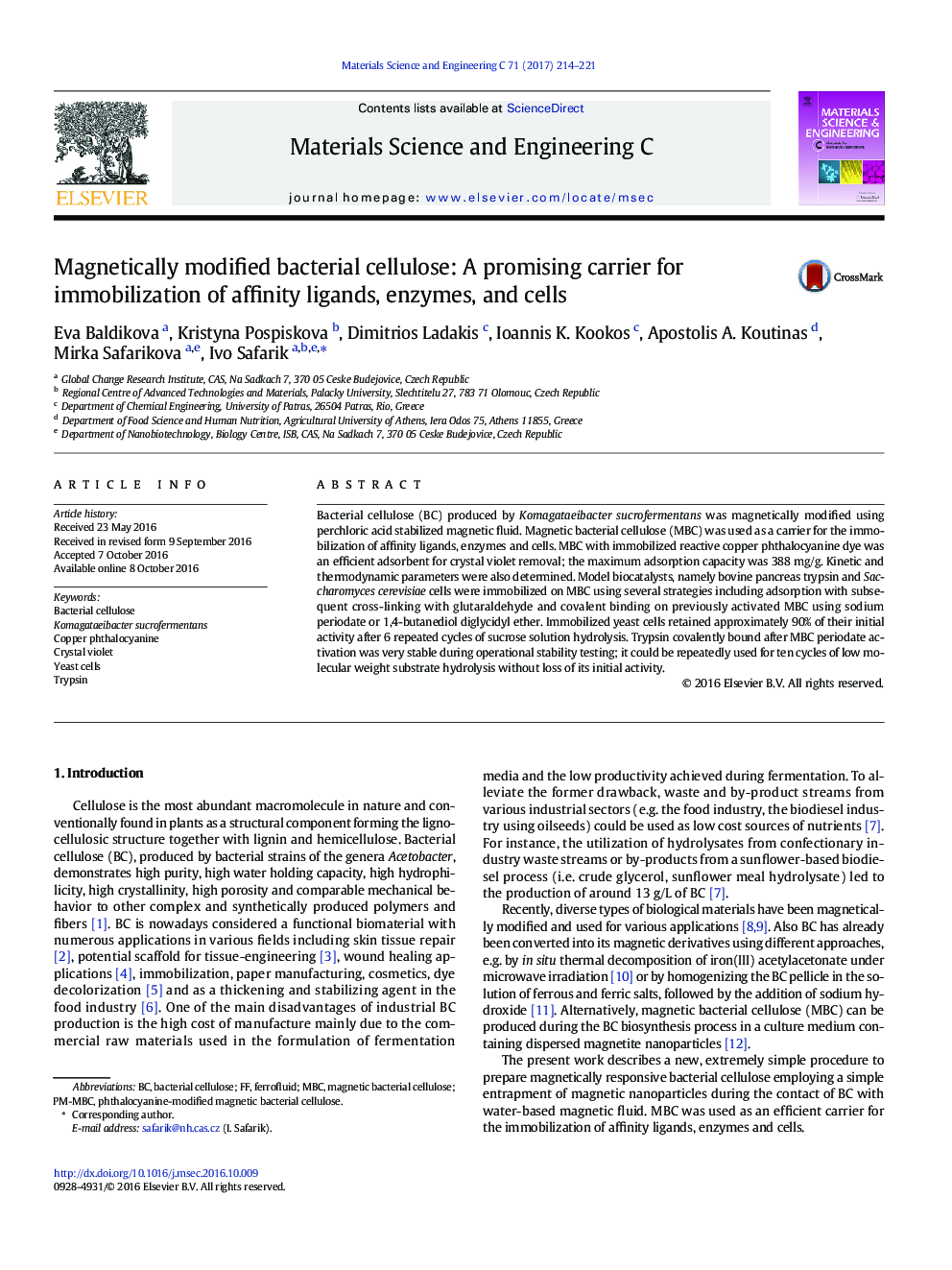| Article ID | Journal | Published Year | Pages | File Type |
|---|---|---|---|---|
| 5434625 | Materials Science and Engineering: C | 2017 | 8 Pages |
â¢Bacterial cellulose was magnetically modified with magnetic fluid.â¢Magnetic cellulose is an efficient carrier for affinity ligands.â¢Enzymes and cells can be efficiently immobilized to magnetic cellulose.
Bacterial cellulose (BC) produced by Komagataeibacter sucrofermentans was magnetically modified using perchloric acid stabilized magnetic fluid. Magnetic bacterial cellulose (MBC) was used as a carrier for the immobilization of affinity ligands, enzymes and cells. MBC with immobilized reactive copper phthalocyanine dye was an efficient adsorbent for crystal violet removal; the maximum adsorption capacity was 388Â mg/g. Kinetic and thermodynamic parameters were also determined. Model biocatalysts, namely bovine pancreas trypsin and Saccharomyces cerevisiae cells were immobilized on MBC using several strategies including adsorption with subsequent cross-linking with glutaraldehyde and covalent binding on previously activated MBC using sodium periodate or 1,4-butanediol diglycidyl ether. Immobilized yeast cells retained approximately 90% of their initial activity after 6 repeated cycles of sucrose solution hydrolysis. Trypsin covalently bound after MBC periodate activation was very stable during operational stability testing; it could be repeatedly used for ten cycles of low molecular weight substrate hydrolysis without loss of its initial activity.
